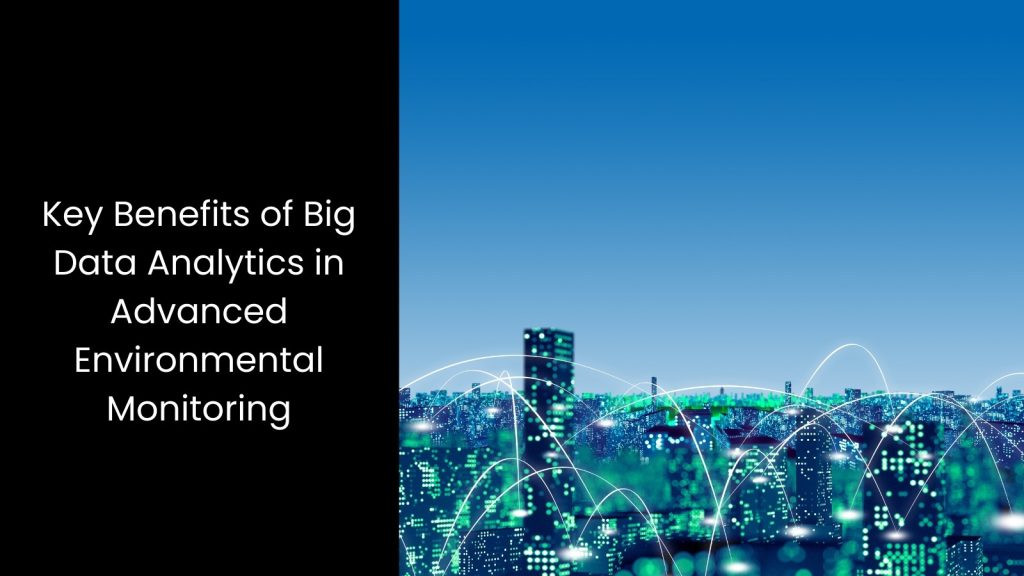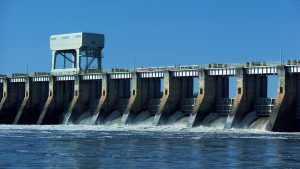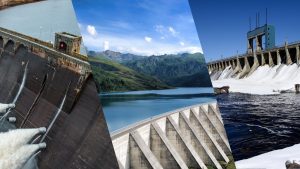As the planet faces growing environmental concerns, various industries and governments are increasingly turning to advanced technologies for better solutions. Big Data Analytics is one such technology revolutionising environmental monitoring. After processing vast amounts of data collected from various sensors and sources, Big Data Analytics allows for real-time tracking of environmental conditions, providing insights that drive smarter decisions. Whether predicting air quality levels or monitoring the effects of climate change, this technology helps us understand and address environmental challenges more effectively.
In this article, we explore how Big Data Analytics is transforming environmental monitoring and its potential to create a more sustainable future.
In this article, we explore how Big Data Analytics is transforming environmental monitoring and its potential to create a more sustainable future.
This article will unlock
3. Enhancing Environmental Monitoring in Industrial Settings via Advanced Software Solutions
What is Big Data Analytics?

- This is the technology that involves using advanced tools and techniques to examine large sets of data that are too complex or massive for traditional methods to handle.
- With Big Data Analytics, city councils, central governments, and respective authorities can find patterns, correlations, and trends within massive volumes of data from various sources like social media, sensors, or transactional records. Instead of just looking at small datasets, Big Data Analytics processes information in real-time and offers insights into areas such as customer behaviour, environmental changes, or market trends.
- The power of this technology lies in its ability to analyse diverse data types, like text, images, and numbers, and turn them into valuable insights. For instance, a water plant can predict future water demand based on current consumer habits, or scientists can track environmental changes using data from multiple sensors.
- It helps to make faster decisions, improve operations, and reduce costs. The technology focuses on processing data at high speed and on a large scale, making it possible to tackle problems that previously seemed too complicated to solve.
Key Benefits of Big Data Analytics in Advanced Environmental Monitoring

Predictive Capabilities
Big Data Analytics plays a vital role in supporting advanced environmental monitoring by providing powerful predictive capabilities. It allows for the analysis of massive datasets collected from various environmental sensors, weather stations, and satellite images.
This technology helps scientists and environmentalists spot trends and patterns in environmental changes over time, such as temperature shifts, pollution levels, or biodiversity loss. When analysing historical data, big data analytics can forecast future conditions and detect potential risks, such as extreme weather events or the spread of contaminants.
For example, it can predict how a wildfire might spread or when air pollution could reach dangerous levels in specific areas. These insights allow for better planning and faster responses to environmental threats.
Instead of waiting for a problem to arise, decision-makers can act ahead of time to reduce harm, whether it is issuing early warnings to communities or adjusting industrial activities to prevent pollution spikes.
Another fact is that big data analytics enables proactive solutions, helping manage resources like water, air quality, and ecosystems more effectively. As more data is collected, the accuracy of predictions improves, ensuring a safer, more sustainable environment.
This technology helps scientists and environmentalists spot trends and patterns in environmental changes over time, such as temperature shifts, pollution levels, or biodiversity loss. When analysing historical data, big data analytics can forecast future conditions and detect potential risks, such as extreme weather events or the spread of contaminants.
For example, it can predict how a wildfire might spread or when air pollution could reach dangerous levels in specific areas. These insights allow for better planning and faster responses to environmental threats.
Instead of waiting for a problem to arise, decision-makers can act ahead of time to reduce harm, whether it is issuing early warnings to communities or adjusting industrial activities to prevent pollution spikes.
Another fact is that big data analytics enables proactive solutions, helping manage resources like water, air quality, and ecosystems more effectively. As more data is collected, the accuracy of predictions improves, ensuring a safer, more sustainable environment.
Cost Reduction
It helps organisations identify inefficiencies and optimise processes, which directly lowers operational costs. In advanced environmental monitoring, large volumes of data from various sources like sensors, satellite imagery, and weather stations are collected and analysed.
Big data analytics processes this data to pinpoint areas where resources might be wasted or where operations could be improved. For instance, in water management, it can analyse usage patterns to detect leaks or inefficiencies in distribution systems, allowing for timely repairs that prevent costly water loss. In waste management, Big Data Analytics can track collection routes and schedules, ensuring trucks only go where necessary and reducing fuel costs.
Additionally, it helps predict when equipment like pumps or filtration systems will need maintenance, preventing expensive breakdowns. With more accurate and efficient processes in place, companies can reduce energy usage, streamline operations, and cut down on waste, leading to significant cost savings.
The insights gained from data analysis allow authorities to allocate resources more effectively, ensuring that funds are spent on areas that truly need attention.
Big data analytics processes this data to pinpoint areas where resources might be wasted or where operations could be improved. For instance, in water management, it can analyse usage patterns to detect leaks or inefficiencies in distribution systems, allowing for timely repairs that prevent costly water loss. In waste management, Big Data Analytics can track collection routes and schedules, ensuring trucks only go where necessary and reducing fuel costs.
Additionally, it helps predict when equipment like pumps or filtration systems will need maintenance, preventing expensive breakdowns. With more accurate and efficient processes in place, companies can reduce energy usage, streamline operations, and cut down on waste, leading to significant cost savings.
The insights gained from data analysis allow authorities to allocate resources more effectively, ensuring that funds are spent on areas that truly need attention.
Climate Change Analysis
It enables the study of long-term environmental patterns, offering valuable insights to help assess and address climate change.
Big data analytics processes vast amounts of data from various sources like temperature readings, atmospheric conditions, and oceanic changes to track environmental shifts over time. With this data, experts can identify trends such as rising temperatures, sea-level increases, or changes in precipitation patterns.
These insights are vital for understanding how climate change impacts ecosystems, agriculture, and human communities. For example, Big Data Analytics can predict how a specific region will be affected by future temperature increases or changes in rainfall, helping governments and organisations prepare for these shifts.
Plus, this technology also helps measure the success of climate policies and initiatives by comparing long-term data before and after implementation. With continuous data collection and analysis, big data analytics can highlight areas most vulnerable to climate change, allowing for focused efforts to reduce risks and protect vulnerable populations.
The ability to analyse long-term environmental data aids in understanding the current state of the planet and also equips decision-makers with the tools to fight climate change more effectively.
Big data analytics processes vast amounts of data from various sources like temperature readings, atmospheric conditions, and oceanic changes to track environmental shifts over time. With this data, experts can identify trends such as rising temperatures, sea-level increases, or changes in precipitation patterns.
These insights are vital for understanding how climate change impacts ecosystems, agriculture, and human communities. For example, Big Data Analytics can predict how a specific region will be affected by future temperature increases or changes in rainfall, helping governments and organisations prepare for these shifts.
Plus, this technology also helps measure the success of climate policies and initiatives by comparing long-term data before and after implementation. With continuous data collection and analysis, big data analytics can highlight areas most vulnerable to climate change, allowing for focused efforts to reduce risks and protect vulnerable populations.
The ability to analyse long-term environmental data aids in understanding the current state of the planet and also equips decision-makers with the tools to fight climate change more effectively.
Early Warning Systems
Real-time monitoring and data analysis help detect environmental hazards like forest fires, floods, or air pollution spikes at the earliest stage, giving authorities a chance to respond quickly. Big data analytics processes data from sensors, satellite images, and weather stations to track changes in the environment that could signal a disaster.
For example, it can monitor changes in temperature, humidity, or wind patterns to detect signs of an approaching wildfire or sudden shifts in river levels to predict floods. The system also tracks pollution levels, alerting communities when air quality drops to dangerous levels.
As the data flows in, big data analytics analyses it almost instantly, allowing for faster decision-making. This ability to process and analyse data in real time enables quicker responses, such as alerting residents to evacuate or preparing emergency services for action.
With advanced environmental monitoring systems in place, big data analytics ensures that people and businesses are prepared for potential environmental threats, helping to reduce damage and loss.
For example, it can monitor changes in temperature, humidity, or wind patterns to detect signs of an approaching wildfire or sudden shifts in river levels to predict floods. The system also tracks pollution levels, alerting communities when air quality drops to dangerous levels.
As the data flows in, big data analytics analyses it almost instantly, allowing for faster decision-making. This ability to process and analyse data in real time enables quicker responses, such as alerting residents to evacuate or preparing emergency services for action.
With advanced environmental monitoring systems in place, big data analytics ensures that people and businesses are prepared for potential environmental threats, helping to reduce damage and loss.
Pollution Tracking
Big Data Analytics supports pollution tracking while enabling continuous monitoring of pollution levels across different regions. This capacity provides real-time data that helps make informed decisions about environmental protection.
The latter collects information from various sources and processes it to track pollutants like carbon dioxide, nitrogen oxides, and particulate matter. This constant data flow allows authorities to see pollution trends over time, identifying areas that are most affected and at risk.
For example, if air pollution spikes in a certain area, big data analytics can help pinpoint the exact location and time, allowing authorities to take quick action, like issuing public health warnings or enforcing stricter regulations. It also helps identify sources of pollution, whether it is traffic, factories, or industrial plants.
With this detailed tracking, governments and authorities can create targeted interventions to reduce pollution in the most affected areas. In this way, big data analytics enhances the effectiveness of environmental policies by providing data-driven insights that improve resource management and help protect public health.
The latter collects information from various sources and processes it to track pollutants like carbon dioxide, nitrogen oxides, and particulate matter. This constant data flow allows authorities to see pollution trends over time, identifying areas that are most affected and at risk.
For example, if air pollution spikes in a certain area, big data analytics can help pinpoint the exact location and time, allowing authorities to take quick action, like issuing public health warnings or enforcing stricter regulations. It also helps identify sources of pollution, whether it is traffic, factories, or industrial plants.
With this detailed tracking, governments and authorities can create targeted interventions to reduce pollution in the most affected areas. In this way, big data analytics enhances the effectiveness of environmental policies by providing data-driven insights that improve resource management and help protect public health.
Enhancing Environmental Monitoring in Industrial Settings via Advanced Software Solutions

The adoption of advanced software solutions in environmental monitoring simply improves operational efficiency and strengthens environmental responsibility within industrial settings. Real-time data and predictive analytics help businesses address issues swiftly and effectively. As industries embrace this technological power through an industry expert, they can achieve sustainability goals while contributing to a cleaner and more eco-friendly industrial landscape.







